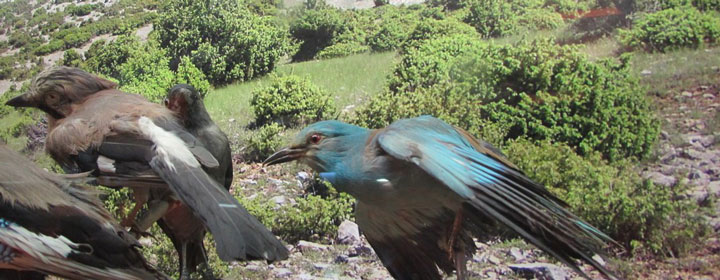
Aiming to sensitize people to and raise their awareness of the need to protect the rich, though endangered, natural resources of Greece, the Faculty of Forestry and Natural Environment of the Aristotle University of Thessaloniki and the Laboratory of Wildlife and Freshwater Fisheries have decided to establish the Wildlife Museum in the new building facilities of the faculty, located in Foinikas.
The Museum is housed in a special area of about 700m2 and it contains approximately two hundred species of wild mammals and endemic birds, as well as migratory species which visit Greece. Some exhibits concern species which have become extinct or are directly threatened with extinction.
Establishing the museum
In the 1950s, Professor I. Papaioannou started collecting the exhibits now displayed at the museum. Though he was a professor of forest botany, he insisted on the necessity of a collection of stuffed animals, which would meet the research and teaching needs of the students of the School of Forestry. Thanks to his constant efforts, many species of stuffed animals, owned by private collectors, were transferred to the present Faculty of Forestry and Natural Environment. Moreover, Christos Gutner enriched the collection with the stuffed animals he donated to the Faculty in 1970.
Later, Professor G. Tsoumis supervised the process of placing the exhibits in special cases, ensuring thus their protection and preservation.
Moreover, the posters from the Goulandris Natural History Museum, donated by Niki Goulandri, enriched the collection of the Museum.
The Museum, which is open to the public, relocated and its space was laid out when the Laboratory of Wildlife and Freshwater Fisheries was founded in 1975, with financial support from the Rector’s Office of the Aristotle University of Thessaloniki, the University Forest Administration and Management Fund and the 6th Hunting Federation of Macedonia-Thrace. Professor N. Papageorgiou was appointed Head of the Museum.
Sensitization to environmental issues
The Museum aims to sensitize visitors and ensure their positive response to the call for the protection of nature and the necessity for the harmonious coexistence of humans and nature.
Apart from meeting the research and training needs of students and researchers, the Museum attracts the interest of and is visited by young students who wish to learn more about the environmental problems in Greece. Thus, they become aware of the need to protect the environment and they start considering ways to manage natural resources properly and protect their natural heritage.
Greek visitors to the Museum are impressed by the animals displayed, and most come to realize that they are not truly aware of the important issues regarding the protection of the Greek fauna and natural environment in general.
Today, more than ever before, the citizens of every country should take up responsibility for protecting the environment. Nonetheless, as mentioned above, this is not possible when most people know little about the natural resources of their country.
Thus, it is urgent that everyone, and especially young people, do whatever it takes to protect animal species from extinction and provide future generations with the opportunity to admire them not only in the cases of a museum, as memories of the past, but also in their natural habitats.

